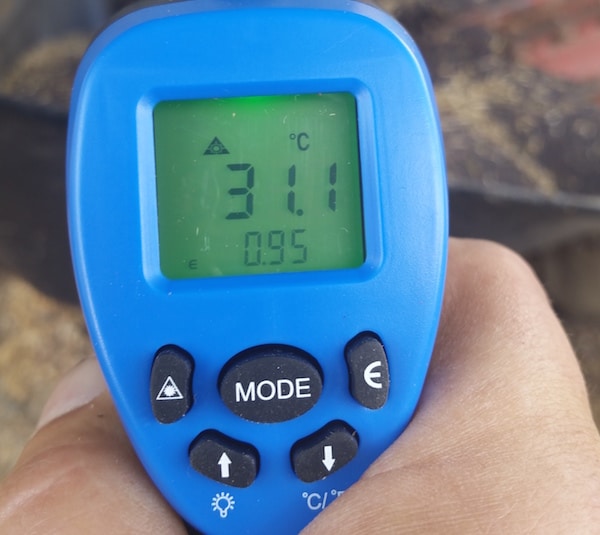Based on conversations with growers and processing plants, heated canola seems to be higher than usual so far this winter. Please check bins to make sure temperatures are stable.

The article Top Grade Oil in the September 2015 Canola Digest explained why processing plants will only take limited amount of heated seed. Here is an excerpt:
… Canola seed damaged in storage by heating does a number of things to degrade quality. Heating will burn off oil, so there is less oil per tonne of seed. Heating also changes the colour of oil and it increases free fatty acid content. For these reasons, processing plants tend to be particular about how much they’ll take.
Processors can handle low levels of heated seed, but it still adds cost. Heating will “set” the natural red colour pigments in canola. All canola oil contains some red pigments, which are removed with the same clay process that removes the green chlorophyll molecules. “Red colour set in by heating is very difficult to remove,” Dave Thiessen says. “Deodorizers can’t remove it, and we end up with darker oil in the end.”
Heated canola also has higher levels of free fatty acids. Fatty acids are usually in triglyceride bonds — three fatty acid molecules are attached to a central glycerol molecule. Free fatty acids are broken from the glycerol bond, and these “free” fats greatly reduce the stability and shelf-life of oil.
Free fatty acids are found in all canola. Good quality new canola seeds will have about 0.5% of fatty acids in the free form. After a year in storage, oxidation through the aging process will push that up to around 1.0%. Heated canola will have much higher free fatty levels as heat breaks the glycerol bonds. Free fatty acids are removed with sodium hydroxide — or “soda” — in the refining process. The sodium molecule in the soda attaches to the fatty acid molecule to make “soapstock”, which is removed from the oil in a centrifuge. …
Grain bags reminder. Harvest bags are best used as a short-term storage solution under Prairie conditions. University of Manitoba researchers made the following recommendations after a three-year bag storage study:
—Canola stored in bags at 8% moisture can be safe in bags for up to 10 months.
—Canola at 10% initial moisture can store in bags for ≤ 7 months.
—With canola at 12% initial moisture, unload bags before ground thaw.
Read more.
Further reading:
Companies that take high green and heated canola
Conditioning tips for canola
Canola Encyclopedia chapter on storage
